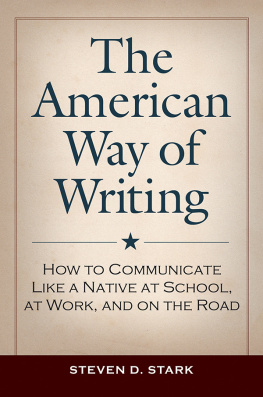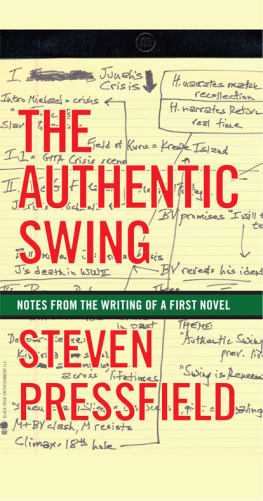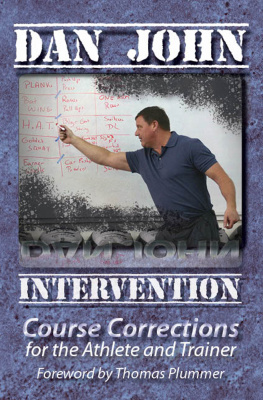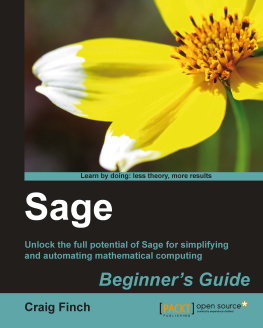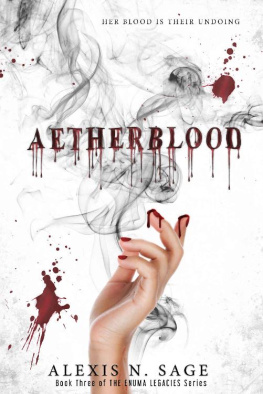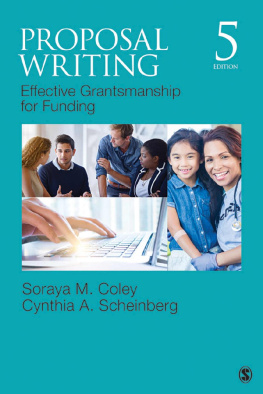Sara Miller McCune founded SAGE Publishing in 1965 to support the dissemination of usable knowledge and educate a global community. SAGE publishes more than 1000 journals and over 800 new books each year, spanning a wide range of subject areas. Our growing selection of library products includes archives, data, case studies and video. SAGE remains majority owned by our founder and after her lifetime will become owned by a charitable trust that secures the companys continued independence.
Los Angeles | London | New Delhi | Singapore | Washington DC | Melbourne
Copyright 2020 by SAGE Publications, Inc.
All rights reserved. Except as permitted by U.S. copyright law, no part of this work may be reproduced or distributed in any form or by any means, or stored in a database or retrieval system, without permission in writing from the publisher.
All third party trademarks referenced or depicted herein are included solely for the purpose of illustration and are the property of their respective owners. Reference to these trademarks in no way indicates any relationship with, or endorsement by, the trademark owner.
FOR INFORMATION:
SAGE Publications, Inc.
2455 Teller Road
Thousand Oaks, California 91320
E-mail: order@sagepub.com
SAGE Publications Ltd.
1 Olivers Yard
55 City Road
London EC1Y 1SP
United Kingdom
SAGE Publications India Pvt. Ltd.
B 1/I 1 Mohan Cooperative Industrial Area
Mathura Road, New Delhi 110 044
India
SAGE Publications Asia-Pacific Pte. Ltd.
18 Cross Street #10-10/11/12
China Square Central
Singapore 048423
Printed in the United States of America
This book is printed on acid-free paper.
Acquisitions Editor: Jessica Miller
Editorial Assistant: Sarah Manheim
Production Editor: Jyothi Sriram and Gagan Mahindra
Copy Editor: Lana Todorovic-Arndt
Typesetter: Hurix Digital
Proofreader: Sarah J. Duffy
Cover Designer: Candice Harman
Marketing Manager: Jillian Ragusa
Preface
As practitioners in probation and policing, we saw many reports that did not provide enough information to make a case for court prosecution or treatment and rehabilitation. As educators, we have seen students in criminal justice struggle with writing citations and referencing, and understanding the processes and procedures of criminal justice without seeing actual reports that mark the progression of a case through the system or the creation of an academic paper. This supplemental text focuses on teaching students how to write in the academic setting, while introducing them to a number of other writing tools, such as memos, emails, resumes, and letters. The goal is to interweave professional and applied writing, academic writing, and information literacy, with the result being a stronger, more confident report writer and student in criminal justice.
There are a couple challenges to writing in criminal justice: (1) Criminal justice practitioners fail to write for an audience and (2) the use of generic report templates. First, to write effectively, the writer must consider the audiences understanding of the topic and the audiences needs and use of the information. Most practitioners fail to consider that they have an audience beyond their immediate supervisor. As such, reports typically lack detail, are filled with slang and jargon, and are structured in a manner often confusing to those without a criminal justice background. Next, most practitioners are taught to use templates for crime types and court documents. In other words, every burglary report will follow the same format with a simple adjustment of the case facts. The same is true for other common crime types. So details may be missed or omitted because they do not fit the template.
Instructors also sometimes struggle with two issues that are shared by students: (1) writing for fact and (2) brevity. Students and faculty are taught throughout their academic careers to write to page-length requirements. In criminal justice reports, there is not a page-length requirement, and the writing process requires the writer to say what needs to be said factually and succinctly. Thus, students have to train themselves to identify the facts and to learn how to write only what is tangible in a report. Instructors have to find a way to teach these skills, while introducing critical thinking and information literacy. This can be a challenge for everyone involved.
Approach
Universities have historically supported intensive courses in writing and have encouraged writing in the discipline across the various academic fields. However, how this has been accomplished is not always clear and varies tremendously from school to school. Sometimes, writing is taught almost exclusively in English courses, while other times, it includes the efforts of individual criminal justice departments. Regardless of the approach, we believe that criminal justice departments have a responsibility to focus on teaching applied writing to their students because writing is an essential skill in this field. In the process of teaching applied writing, instructors can also prepare students to write well academically by introducing information literacy, critical thinking in writing, and the American Psychological Association (APA) style.
The first chapter of this text focuses on the basics of writing by introducing common grammar errors and the types of writing projects commonly seen in academia and the field of criminal justice. The second chapter introduces information literacy and digital literacy to students. , concentrates on the academic research paper by providing students a format to use and information on how to read a scholarly article.
The chapters are enhanced with other features such as:
- Chapter summaries
- Narrative and descriptive examples
- Questions for consideration and critical thinking
- In the News reports supporting the material discussed
- Applied exercises
- Examples from common documents used in pretrial reporting, probation, and parole.
Acknowledgments
Even though this is the first edition of the text, we have several individuals to thank for their contributions. We thank the following reviewers of the manuscript for their many helpful suggestions:
Anita Lavorgna, University of Southampton
Bobbie Ticknor, Valdosta State University
Brittany Rodriguez, Tarleton State University
Bryn Herrschaft-Eckman, PhD, Temple University
Carrie Maloney, East Stroudsburg University





